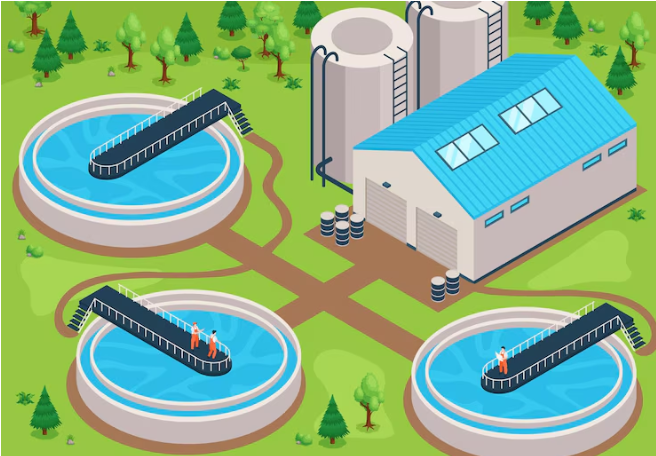Understanding Sewage Water Treatment: Process and Importance
Discover the significance of sewage water treatment plants, the process involved, and the meaning of sewage water.
Sewage water treatment plants play a crucial role in preserving the environment and ensuring public health. They are designed to remove contaminants from sewage, making it safe for disposal or reuse.
In this comprehensive guide, we will delve into the meaning of sewage water, the sewage water treatment process, the importance of sewage water treatment plants, and their impact on the environment and public health.
What is Sewage Water?
Sewage water, also known as wastewater, is the used water from households, industries, and commercial establishments.
It contains various contaminants such as organic matter, chemicals, and pathogens, making it harmful to the environment and human health if not treated properly. Sewage water can come from various sources, including:
- Domestic wastewater from households and buildings.
- Industrial wastewater from factories and manufacturing plants.
- Commercial wastewater from businesses and commercial establishments.
- Sewage Water Treatment Process
Preliminary Treatment: This is the first stage where large debris and solids are removed from the sewage using screens and grit chambers. This helps protect downstream equipment from damage and improves the efficiency of the treatment process.
Primary Treatment: In this stage, the sewage is settled in a large tank, allowing the solids to settle at the bottom and the oils and grease to float to the surface.
These are then removed, leaving behind partially treated sewage. Primary treatment helps reduce the biochemical oxygen demand (BOD) of the sewage, making it easier to treat in the next stages
Secondary Treatment: The partially treated sewage undergoes biological treatment, where microorganisms break down the organic matter into simpler substances. This process can be aerobic (using oxygen) or anaerobic (without oxygen).
Aerobic treatment is more common and is achieved using activated sludge or trickling filters. Anaerobic treatment is used in specific cases where energy recovery is a priority.
Tertiary Treatment: This is the final stage where the sewage undergoes further treatment to remove any remaining contaminants. This may include filtration, disinfection, or advanced oxidation.
Tertiary treatment is essential for producing high-quality effluent that can be safely discharged into water bodies or reused for various purposes.
Importance of Sewage Water Treatment Plants
Environmental Protection: Proper treatment of sewage water prevents pollution of water bodies, protecting aquatic life and ecosystems.
Untreated sewage water can contain harmful pathogens and chemicals that can devastate marine environments.
Public Health: Treated sewage water is safe for disposal or reuse, reducing the risk of waterborne diseases.
Improper disposal of sewage water can contaminate drinking water sources and lead to outbreaks of diseases such as cholera, typhoid, and dysentery.
Resource Conservation: Treated sewage water can be reused for irrigation, industrial processes, and even drinking water, conserving freshwater resources.
This is especially important in arid regions where water scarcity is a major issue.
Energy Recovery: Sewage treatment plants can also generate energy from the treatment process. Methane gas, a byproduct of anaerobic digestion, can be captured and used as a renewable energy source.
This helps reduce the reliance on fossil fuels and mitigates greenhouse gas emissions.
Impact of Sewage Water Treatment on the Environment and Public Health
Proper treatment of sewage water has a positive impact on the environment and public health. Some of the key benefits include:
Reduced Water Pollution: By removing contaminants from sewage water, treatment plants help reduce pollution of water bodies, preserving aquatic ecosystems and biodiversity.
Improved Water Quality: Treated sewage water can be safely discharged into water bodies or reused for various purposes, improving overall water quality and reducing the risk of waterborne diseases.
Conservation of Natural Resources: Reusing treated sewage water for irrigation, industrial processes, and other purposes helps conserve freshwater resources, which are becoming increasingly scarce due to population growth and climate change.
Mitigation of Climate Change: By capturing methane gas from the treatment process, sewage treatment plants can reduce greenhouse gas emissions, contributing to efforts to mitigate climate change.
Conclusion
Sewage water treatment plants play a critical role in protecting the environment and public health. By understanding the sewage water treatment process and the importance of proper sewage water treatment, we can promote a cleaner and healthier environment for future generations.
It is essential to invest in sustainable sewage water treatment infrastructure and practices to ensure the long-term health and well-being of our planet.
FAQS (Frequently Asked Questions)
What is the purpose of a sewage water treatment plant?
The main purpose of a sewage water treatment plant is to clean sewage water so that it can be safely released back into the environment or reused for various purposes. This helps protect public health and the environment.
How does a sewage water treatment plant work?
Sewage water treatment plants work by using a series of processes to remove contaminants from sewage water.
These processes include physical, chemical, and biological treatments that help separate solids from liquids and break down organic matter.
What are the environmental benefits of sewage water treatment plants?
Sewage water treatment plants play a crucial role in protecting the environment by reducing water pollution.
By removing harmful contaminants from sewage water, these plants help maintain the health of aquatic ecosystems and protect wildlife.
Can treated sewage water be reused?
Yes, treated sewage water can be reused for various purposes, such as irrigation, industrial processes, and even drinking water.
This helps conserve freshwater resources and reduces the strain on water supplies.
Are sewage water treatment plants sustainable?
Yes, sewage water treatment plants can be sustainable. Many plants use renewable energy sources, such as solar or wind power, to operate.
Additionally, some plants use the byproducts of the treatment process, such as methane gas, as a source of energy. These practices help reduce the environmental impact of sewage treatment.



